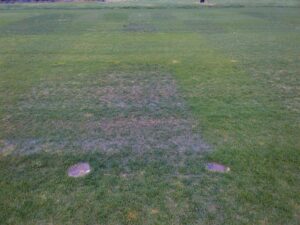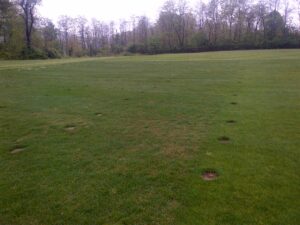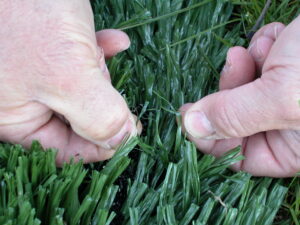By Jim Murphy
There are numerous elite varieties of Kentucky bluegrass (Compact Types) that have excellent tolerance of leaf spot, summer patch, and stripe smut diseases. Many varieties produce a very attractive, dense, compact (low growing) turf with dark green color during the summer.
Some elite varieties of Kentucky bluegrass exhibit slow spring green-up (plot in center foreground).
However, many of these Kentucky bluegrass varieties that are grown and sold as sod have the growth characteristic of long winter dormancy and slow spring green-up. The cool dry weather of this spring has certainly exacerbated this growth response. Full green-up of these varieties typically occurs by mid- to late-May.
Practices that hasten spring green-up of turf include fertilization with moderate amounts (0.4 to 0.7 pounds per 1,000 square feet) of water soluble nitrogen (WSN) and covering the turf with a growth blanket early in the spring (March and April).
Perennial ryegrass and tall fescue will often green-up several weeks earlier than these Compact Type Kentucky bluegrasses. Perennial ryegrass typically will have the earliest green-up.
Of the fine fescues used for turf, creeping red fescue will green-up earlier than Chewings fescue and hard fescue will have the slowest spring green-up. Green-up of creeping red fescue is relatively early and not too different from perennial ryegrass.



